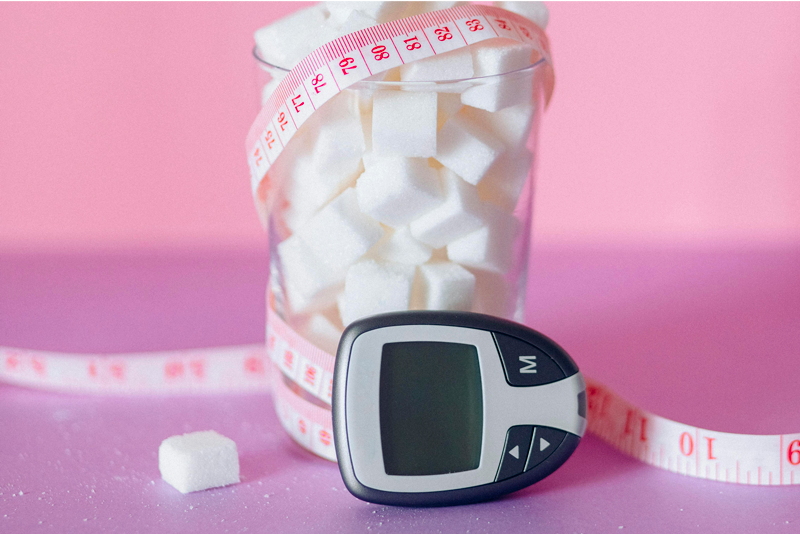
Cravings and blood sugar levels are closely linked. Cravings are defined in the dictionary as “an intense, urgent, or abnormal desire”. It occurs when blood sugar levels suddenly fall. Find out how to regulate your blood sugar levels to avoid compulsive eating.
Food cravings: how to predict and effectively avoid them?
Those unexpected impulses are not easy to resist. They gnaw at our stomachs and prompt us to go and find something to eat in the fridge or cupboard.
What are cravings?
A state of sudden, intense hunger, hunger pangs often manifest as cravings for specific foods, often rich in calories and sugars. They can occur at any time of day and can be caused by a variety of factors.
According to scientists and nutritionists, the causes of these cravings may reveal a physiological and/or psychological need.
What motivates these cravings?
A physiological need is a sensation of lack that occurs when our body needs something to function properly. These needs are often linked to our body’s vital functions, such as hunger, thirst, sleep or waste elimination.
In our case, we should worry about the very notion of hunger. For example, too frequent deprivation of sugar can lead to cravings for sweets. Our muscles, brain and red blood cells are “glucose-dependent”, meaning they need sugar to function. When the level of sugar in our blood drops, our brain sends hunger signals to alert us that our body needs food to function properly. If these signals are not quickly answered, they can become increasingly strong and compulsive, creating an irrepressible urge to eat. Controlling appetite can thus become complicated, which can lead to eating too much food.
Food can be comforting for some people – for example during a difficult day, an argument, anger or a break-up, all potential sources of anxiety. Food is therefore perceived as a cuddly toy that is always there to comfort them. In some cases, food cravings may be linked to a behavioural pattern acquired during childhood. Some people were comforted by their parents with food when they were babies, which created an association between food and emotional comfort. As a result, whenever they feel tense, they eat to find emotional relief, as a conditioned response to a stressful situation.
Change your eating habits to combat food cravings
Certain foods help to curb cravings. Filling and low in sugar, they provide the body with enough energy to limit uncontrolled food cravings.
Eggs
Alongside meat, eggs are one of the most protein-rich foods. Studies have shown that eating an egg for breakfast can help reduce hunger between meals.
Ham
Ham can help reduce the feeling of “hunger”. Proteins are digested more slowly than carbohydrates and so can help to keep you feeling fuller for longer.
Be advised however that some types of ham can be high in sodium or fat; so, we recommend choosing steamed or grilled ham. A combination of vegetables and ham guarantees a balanced meal!
Dried vegetables
Dried peas, beans, lentils, chickpeas, etc. are rich in protein and contain little fat. Eating them regularly can help control hunger after a meal.
Almonds
A study published in 2013 showed that daily consumption of almonds (42g) helped to better control feelings of hunger without leading to weight gain. Furthermore, eating almonds improved vitamin E and monounsaturated fat intakes. The beneficial effects of almonds may be due to their high monounsaturated fat, protein and fibre content.
Dried fruit
With their high fibre, nutrient and natural sugar content, dried fruit such as dates, apricots and raisins can help curb cravings for sweets.
However, dried fruit is high in calories, so avoid eating too much of it.
Fresh fruit
What could be better than fruit?
They are rich in nutrients, fibre and water. They are naturally sweet. They count among the foods whose consumption provides nutrients that are absolutely essential for good health. In other, more scientific terms, it provides no empty calories.
Fruits such as apples, bananas, oranges and berries are also rich in antioxidants, which are good for your health.
However, remember to vary your fruit intake to benefit from all the essential nutrients each provides.
Blood sugar: regulating it to prevent cravings and maintain good health.
Glycaemia is the amount of glucose (sugar) in the blood. Glucose is one of the body’s most important sources of energy – particularly for the brain, muscles and tissues.
But be careful not to push it too far! Blood sugar levels need to be regulated to keep them stable.
As soon as blood sugar levels fall, our brain sends hunger signals that can become compulsive if we do not respond quickly enough by eating sugary or carbohydrate-rich foods. This can lead to temporary hyperglycaemia, which in turn can cause cravings later on because of the drop in blood sugar that follows. That is why it is important to keep blood sugar levels stable by eating foods with a low glycaemic index and avoiding foods high in refined sugar or simple carbohydrates.
In conclusion, to avoid food cravings, you should make sure that you:
- Eat foods with a low glycaemic index, such as vegetables, fruit, legumes and wholegrain cereals. Digested slowly, they allow glucose to be released gradually into the bloodstream and avoid blood sugar spikes.
- Exercise regularly: Regular exercise can help regulate blood sugar levels by increasing insulin sensitivity and helping the body to use glucose more efficiently.
- Eat fibre-rich foods: Fibre-rich foods slow down the digestion and absorption of carbohydrates, helping to maintain stable blood glucose levels.
- Avoid added sugars: Added sugars in drinks, desserts and processed foods can cause blood sugar spikes, so you should definitely watch out for them. However, that does not mean that you should never indulge in anything, on the contrary. But it should remain a guilty pleasure, and not become a habit.
- Keep an eye on your carbohydrate intake and consider calling on the services of a sports coach, nutritionist or dietician,
Our latest publications
Want to learn more about topics related to blood sugar management?
Here are our most recent blog posts!



